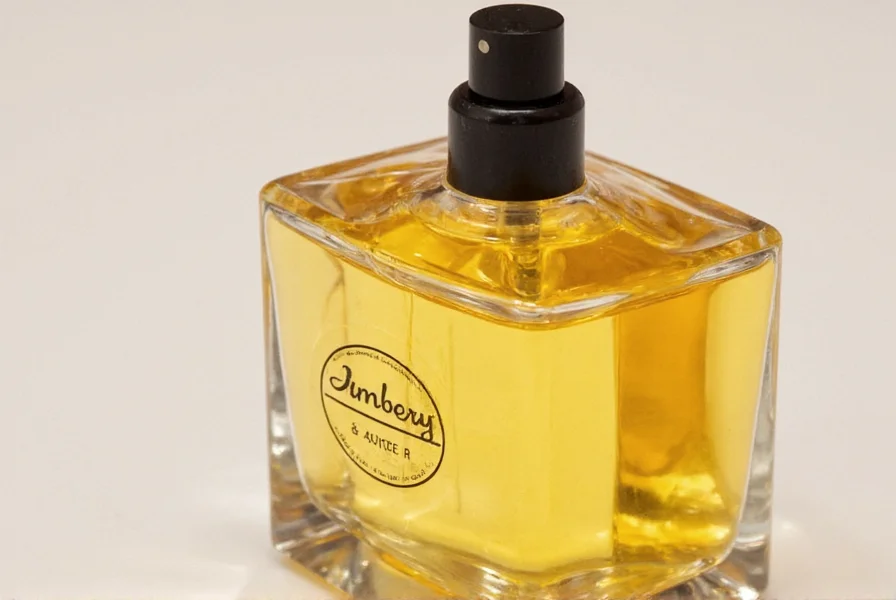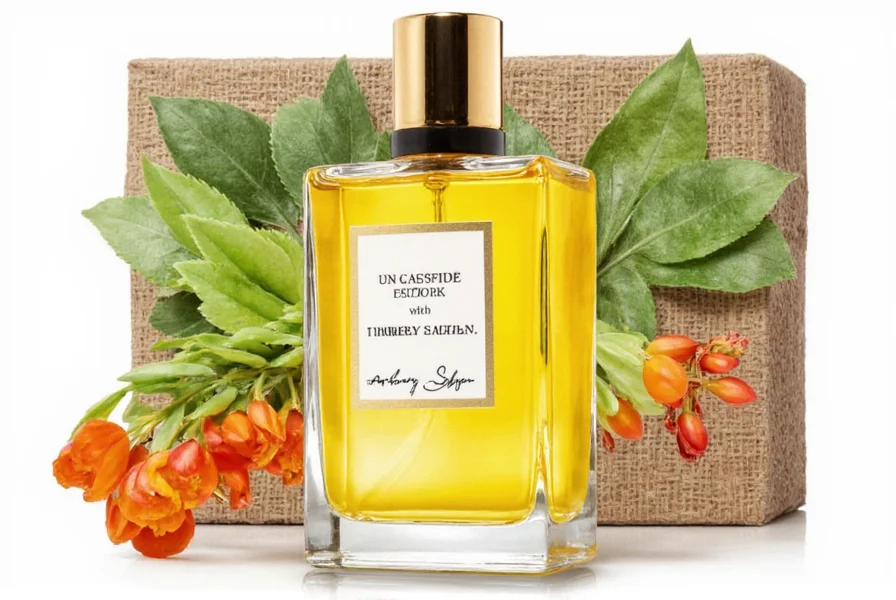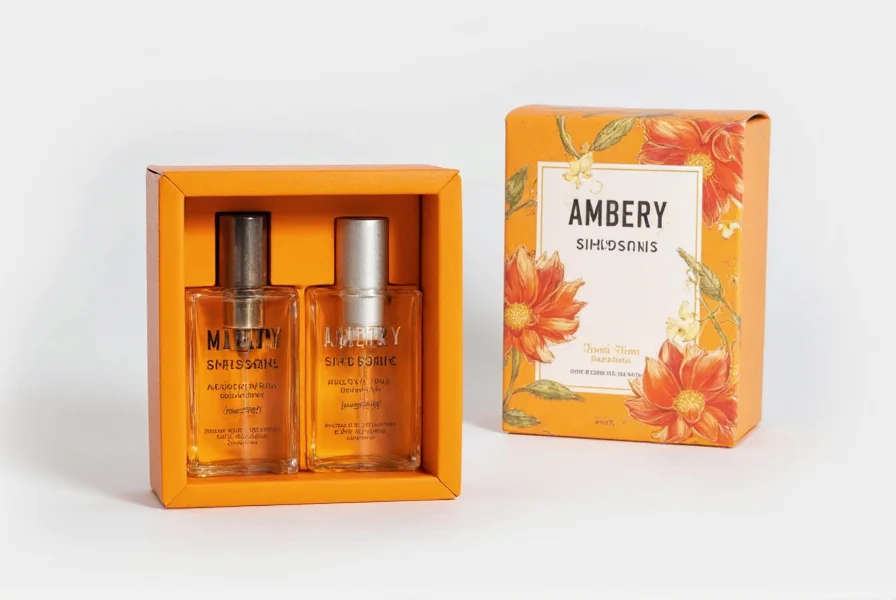An ambery saffron fragrance represents one of perfumery's most sophisticated and challenging combinations, requiring precise technical knowledge to balance saffron's distinctive medicinal, leathery characteristics with the warm, resinous depth of ambery notes. The ambery saffron dossier serves as an essential reference for professional perfumers seeking to master this complex accord.
The Science Behind Ambery Saffron Compositions
Saffron in perfumery isn't derived directly from the spice but rather recreated through a careful blend of aromatic compounds that capture its distinctive character. The primary components include:
| Compound | Chemical Profile | Contribution to Saffron Accord |
|---|---|---|
| Ionones | C13 ketones | Provides violet-like floralcy with subtle spice |
| Safranal | Monoterpene aldehyde | Creates the characteristic leathery, medicinal top note |
| Picrocrocin derivatives | Glycosides | Adds the distinctive bitter-honey nuance |
| Carotenoid breakdown products | Various aldehydes | Contributes to the warm, hay-like drydown |
When combined with ambery bases—which typically feature labdanum, benzoin, vanilla, and synthetic ambers like Ambroxan—the saffron accord requires careful balancing. The warm, resinous qualities of ambery notes can easily overwhelm saffron's delicate complexity if not properly calibrated. Professional ambery saffron dossier templates specify exact concentration ranges, typically keeping saffron components between 0.8-2.5% of the total formula to maintain balance.

Historical Context and Evolution
Saffron has been used in perfumery since ancient times, with historical records showing its incorporation in Egyptian kyphi formulas and Persian royal scents. However, the deliberate pairing with ambery bases emerged more recently as synthetic ambery molecules became available in the 20th century.
Early ambery saffron formulations faced significant challenges due to saffron's photoreactive compounds and tendency to degrade when exposed to light. Modern ambery saffron dossier specifications address these stability issues through:
- UV-protective packaging recommendations
- Antioxidant inclusion protocols (typically 0.1-0.3% BHT)
- Specific aging requirements before final evaluation
- Temperature-controlled storage parameters
Technical Formulation Guidelines
A professional ambery saffron dossier provides precise technical specifications that go beyond simple ingredient lists. Key elements include:
Concentration Ranges by Fragrance Type
| Fragrance Concentration | Saffron Accord % | Ambery Base % | Recommended Aging |
|---|---|---|---|
| Extrait (20-30%) | 1.8-2.5% | 12-15% | 4-6 weeks |
| Eau de Parfum (15-20%) | 1.2-1.8% | 10-12% | 3-4 weeks |
| Eau de Toilette (8-15%) | 0.8-1.2% | 8-10% | 2-3 weeks |
These precise ratios prevent the saffron from becoming overly medicinal or the ambery notes from dominating the composition. The ambery saffron dossier also specifies critical blending sequences—typically introducing saffron components after the ambery base has been properly diluted in the carrier solvent.

Common Challenges and Professional Solutions
Creating a successful ambery saffron fragrance presents several technical challenges that a comprehensive ambery saffron dossier addresses:
Stability Issues
Saffron's carotenoid derivatives can degrade when exposed to light and oxygen, causing color changes and scent deterioration. Professional dossiers recommend specific antioxidant concentrations and UV-filtering compounds to maintain stability without altering the fragrance profile.
Cost Management
True saffron absolute costs approximately $5,000 per kilogram, making it prohibitively expensive for most commercial applications. The ambery saffron dossier provides cost-effective alternatives using carefully calibrated blends of ionones, safranal, and other saffron-reminiscent compounds that maintain the characteristic profile at a fraction of the cost.
Seasonal Performance Variations
Ambery saffron compositions behave differently across seasons due to temperature effects on volatility. Winter formulations typically increase the saffron component by 0.3-0.5% to compensate for reduced evaporation rates, while summer versions may reduce it slightly to prevent overwhelming intensity in heat.
Modern Applications and Creative Variations
Contemporary perfumers use the ambery saffron dossier as a foundation for innovative variations that push the boundaries of this classic combination:
- Leather-Ambery Saffron: Adding birch tar or cade oil to enhance the leathery dimension
- Smoky-Ambery Saffron: Incorporating guaiac wood and cypress for a campfire-like quality
- Floral-Ambery Saffron: Blending with osmanthus or rose to soften the medicinal edge
- Gourmand-Ambery Saffron: Introducing subtle honey or caramel notes for a sweeter interpretation
Each variation requires specific adjustments documented in specialized ambery saffron dossier templates. The most successful modern interpretations maintain saffron's distinctive character while integrating it seamlessly with the ambery foundation.
Professional Evaluation Protocol
A complete ambery saffron dossier includes a standardized evaluation protocol that perfumers follow to assess the quality of their formulation:
- Initial assessment: Evaluate the raw blend immediately after mixing
- 24-hour assessment: Check for any negative interactions or instability
- Aged assessment: Evaluate after the recommended aging period
- Dilution assessment: Test at multiple concentrations to ensure balance across strengths
- Wear testing: Assess performance on skin over 24 hours
This systematic approach ensures that the final fragrance maintains the delicate balance between saffron's complex character and the warm, enveloping quality of ambery notes.
Conclusion: The Enduring Appeal of Ambery Saffron
The ambery saffron combination continues to captivate perfumers and fragrance enthusiasts due to its remarkable complexity and emotional resonance. When properly formulated according to a detailed ambery saffron dossier, this accord creates fragrances that are simultaneously warm and intriguing, familiar yet distinctive. As perfumery technology advances, these technical documents evolve to incorporate new insights while preserving the essential character that makes ambery saffron compositions so compelling.
Frequently Asked Questions
What is the ideal concentration of saffron in an ambery fragrance formulation?
The ideal concentration of saffron components in an ambery fragrance typically ranges from 0.8% to 2.5% of the total formula, depending on the fragrance concentration. Extrait formulations can support the higher end of this range (1.8-2.5%), while lighter eau de toilette formulations require the lower end (0.8-1.2%) to maintain balance without becoming overly medicinal.
Why does saffron require special handling in perfume formulation compared to other notes?
Saffron requires special handling due to its photoreactive compounds that can degrade when exposed to light, causing color changes and scent deterioration. Additionally, saffron's complex chemical profile contains both volatile top notes and more stable base components that require careful balancing. Professional ambery saffron dossier specifications address these challenges through specific antioxidant protocols, aging requirements, and precise blending sequences.
Can saffron be substituted with more affordable ingredients without losing the characteristic profile?
Yes, professional perfumers commonly use carefully calibrated blends of ionones, safranal, and other saffron-reminiscent compounds to recreate the characteristic profile at a fraction of the cost of true saffron absolute. An ambery saffron dossier provides specific ratios and combinations that maintain the distinctive leathery-spicy character while being economically viable for commercial production.
How does temperature affect ambery saffron fragrance performance?
Temperature significantly affects ambery saffron fragrances due to the different volatility profiles of the components. In warmer temperatures, the saffron notes become more pronounced, potentially overwhelming the composition. Professional formulations documented in an ambery saffron dossier often include seasonal variations, with winter formulations increasing saffron by 0.3-0.5% and summer versions slightly reducing it to maintain balance across different environmental conditions.
What are the most common mistakes when creating ambery saffron fragrances?
The most common mistakes include using too high a concentration of saffron components (resulting in an overwhelming medicinal character), improper aging before evaluation, inadequate stability measures leading to degradation, and failing to account for how the ambery base interacts with saffron's complex chemistry. A comprehensive ambery saffron dossier provides specific guidance to avoid these pitfalls through precise concentration ranges, aging protocols, and stability considerations.











 浙公网安备
33010002000092号
浙公网安备
33010002000092号 浙B2-20120091-4
浙B2-20120091-4